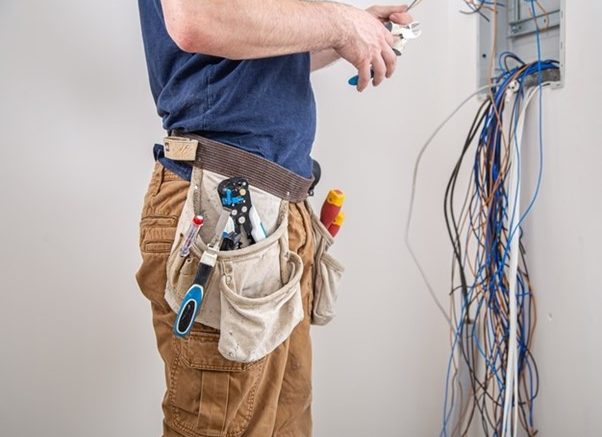Image source: pvproductions
It’s great if you want to take the DIY route for installing electrical wiring at your residence. It’s a cost-efficient approach compared to hiring a professional which is expensive and a hassle to find. Before you begin, arm yourself with the basics of the electrical systems, so that you’re well-equipped to troubleshoot whatever you see.
Wire Gauge Basics For Residences
There are numerous electrical wires available in different sizes and gauges. A thick wire gauge has the property to prevent overheating. The circuit breaker and electrical wires are ideally supposed to work together and sizes must be coordinated. For instance, an RG11 coax cable is a 14 gauge wire that should have a circuit breaker, not more than 15 amps. It’s crucial to know the correct wire and circuit breaker that can be used for a given purpose. Be sure to go through the residential codes before wiring.
What Are The Various Options Available For Household Wires?
As a homeowner, it is important to be aware of the various types of household wires. An electrical wire ideal for the home has three wires of different colors wrapped in an insulating sheath. The “hot” wire carries the electrical current. The white one is neutral and the bare copper wire is grounded.
Another common type of electrical wire is the three conductor wire. It has four wires wrapped in a protective insulated covering. They have two wires – red and black, that carry an electric charge and one each neutral and earth wire.
The other types are –
- RG6 Coax Cable – These types of cables are ideal for wifi systems, television connections, etc. in the house. You can buy them on Solid Signal.
- NM Cable – The cable is used for wiring the systems or appliances inside the house. It is ideal for switches, fixtures, appliances, and outlets that are located in dry areas of the house.
- Underground feeder cable – These cables are specialized for locations prone to getting wet. Such wires are directly connected to the ground and hence are ideal for outdoor projects.
- Armored Cables – For certain areas, the codes do not allow NM cables to be used. Hence, armored cables are used in such areas.
- Low-Voltage Wires – Ideal for doorbells, sprinklers, landscape lights, etc. that do not require more than 50 amps of voltage.
How To Maintain Caution While Installing
The process of installing electrical wires is easy, but you should take thorough precautionary measures. Some of them are-
- The wiring should not have any tension or run-overs in the system.
- The cable should not be bent beyond the recommended radius.
- Avoid any twisting or knotting in the cable wires when it is installed.
- There should be no compromise on the durability of the wiring. Thus, there should be no crushing or impact on the wire.
- Ensure that wires and cables do not come in contact with the flames or any other heating elements.
- For systems that require an unusual manner of installation, consult a qualified electrician before making any decisions.
Maintenance Of The Electrical Wiring
Installation is the hard part, yes, but your responsibility does not end there. It is important for you to maintain the wiring so that it stays put. The above-listed precautionary measures ensure that basic maintenance hurdles are taken care of.
Apart from this, you can keep an eye for aging wires that might be hazard-prone. Timely repairs are essential as damaged wires are a serious threat to the home and homeowners. These repairs are a costly affair, so it would be a good idea to purchase a home warranty that covers these expenses.
However, not all companies might cover electrical systems in their plans so read reviews of home warranty companies before purchasing.
Record Keeping
Many people overlook the importance of documentation but are essential to maintain records of the cables and wires that you purchase. Note the installation dates. It is also a good idea to maintain a log of causes of wire system failure or areas susceptible to damage.
Final Word
Having a basic knowledge of electrical systems saves many dollars. Grab your equipment, and once you arm yourself with the information, get going!

